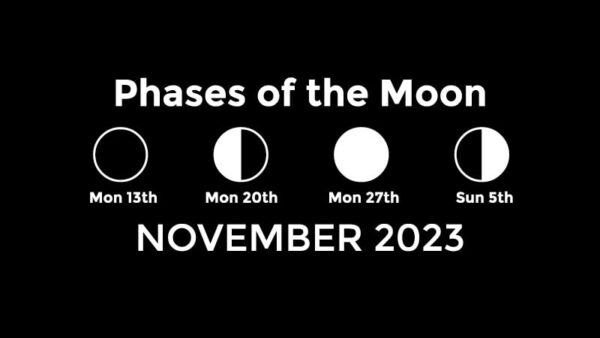Find out what to go out and look at this month
Planets:
In the celestial theatre of November, Mercury will once again grace the early evening sky, making its reappearance during the second week of the month amidst the constellation of Libra (The Scales). As November draws to a close, Mercury will journey onward, traversing the vast expanse of the Scorpius constellation (The Scorpion), before venturing into the constellation of Ophiuchus (The Serpent-Bearer).
At the onset of November, Venus will be a captivating sight in the pre-dawn hours, residing within the Leo constellation (The Lion). As the month progresses, Venus will gracefully transition into the neighbouring Virgo constellation (The Virgin). Regrettably, Mars will remain shrouded in the brilliant radiance of the Sun throughout November, rendering it invisible to those observing the night sky with the naked eye.
Jupiter, the regal giant of our solar system, will be a prominent fixture throughout the night, positioned between the constellations of Cetus (The Sea Monster), and Aries (The Ram). Meanwhile, Saturn will illuminate the evening sky within the realm of Aquarius (The Water Bearer), until it descends below the horizon halfway through the night. Jupiter will reach opposition on the nights of November 3rd and 4th, a celestial event when Earth positions itself directly between the Sun and Jupiter. This moment presents an excellent opportunity for observing Jupiter in all its glory.
For enthusiasts of the night sky, Uranus will make a continuous appearance throughout the night, taking residence in the constellation of Taurus (The Bull). Uranus will also reach opposition on the nights of November 13th and 14th, so it’s going to be the best time to see it. As a special treat for stargazers, Neptune will be nestled amid the constellations of Pisces (The Fish), and Cetus, offering a unique opportunity to spot this distant ice giant.
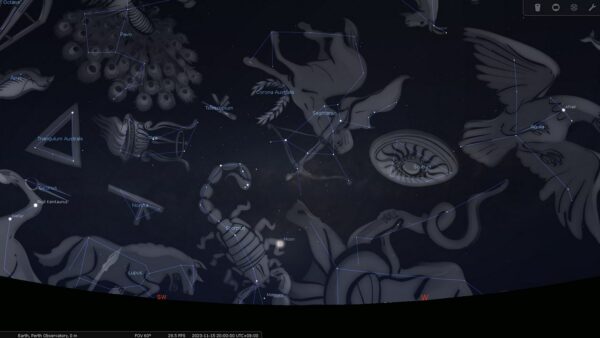
|
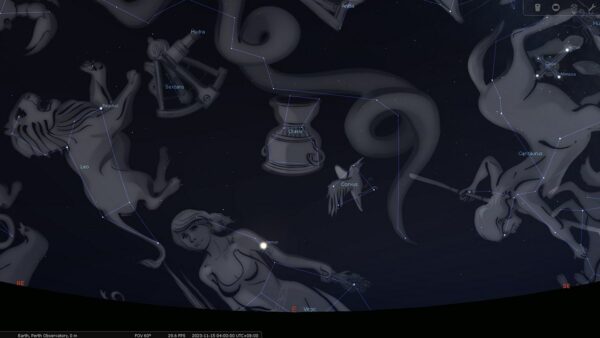
|
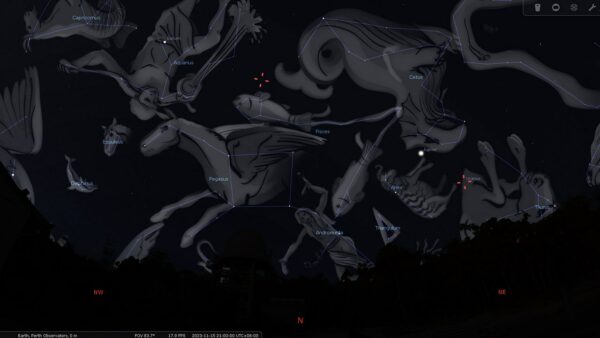
|
| Planet | When It Rises Or Sets |
|---|---|
| Mercury | Second week of November, it’ll set at 07:41 pm (AWST), and by the end of the month, it’ll set at 08:46 pm (AWST) |
| Venus | Halfway through November, it’ll rise at 03:13 am (AWST), and by the end of the month, it’ll rise at 02:53 am (AWST) |
| Mars | Lost in the Sun’s glare |
| Jupiter | At the start of November, it’s viewable throughout the night, and by the end of the month, it’ll set at 03:33 am (AWST) |
| Saturn | At the start of November, it’ll set at 02:24 am (AWST), and by the end of the month, it’ll set at 00:32 am (AWST) |
| Uranus | At the start of November, it’ll rise at 07:33 pm (AWST), and by the end of the month, it’ll set at 04:11 am (AWST) |
| Neptune | At the start of November, it’ll set at 03:30 am (AWST), and by the end of the month, it’ll set at 01:35 am (AWST) |
Conjunctions And Occultations:
Conjunctions involve object(s) in the Solar System and/or more distant objects, such as a star. It’s an apparent phenomenon in which multiple objects which aren’t close together appear close in the sky and it’s caused by the observer’s perspective.
In an occultation, an object passes across the line of sight between an observer and another object. A solar eclipse is an occultation of the Sun by the Moon.
- 04/11/23 – Conjunction of The Moon, Castor, and Pollux (Where to look)
- 07/11/23 – Conjunction of The Moon, Algieba, and Regulus (Where to look)
- 10/11/23 – Conjunction of The Moon and Venus (Where to look)
- 14/11/23 – Conjunction of The Moon, Mercury, and Antares (Where to look)
- 17/11/23 – Conjunction of Mercury and Antares (Where to look)
- 21/11/23 – Conjunction of The Moon and Saturn (Where to look)
- 25/11/23 – Conjunction of The Moon and Jupiter (Where to look)
- 27/11/23 – Conjunction of The Moon, Aldebaran, and Pleiades (Where to look)
- 29/11/23 – Conjunction of Venus and Spica (Where to look)
- 29/11/23 – Conjunction of The Moon and Elnath (Where to look)
Astronomical Events This Month:
The Northern Taurid Meteor Shower:
The Northern Taurid Meteor Shower will grace the night skies from October 20th to December 10th, with its peak expected on the night of November 12th and 13th. The best viewing time is around 02:00 am (AWST), as the radiant point of the Northern Taurids will be at its zenith in the northern sky. In the year 2023, the Northern Taurids are projected to offer a display of approximately 5 meteors per hour, thanks to the Moon being in its New Moon phase, minimizing any potential light pollution.
The origin of the Northern Taurids is traced back to the asteroid 2004 TG10. This celestial traveller is an eccentric asteroid, classified as a near-Earth object and a potentially hazardous member of the Apollo group. It first caught the attention of astronomers when it was spotted by the Spacewatch survey on November 8, 2004. With a potential size exceeding one kilometre in diameter, asteroid 2004 TG10 is believed to be a fragment of Comet Encke, serving as the source not only for the Northern Taurids but also for the minor shower known as the June Beta Taurids.
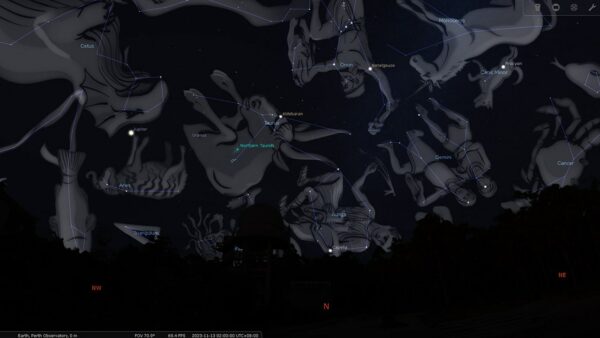
|
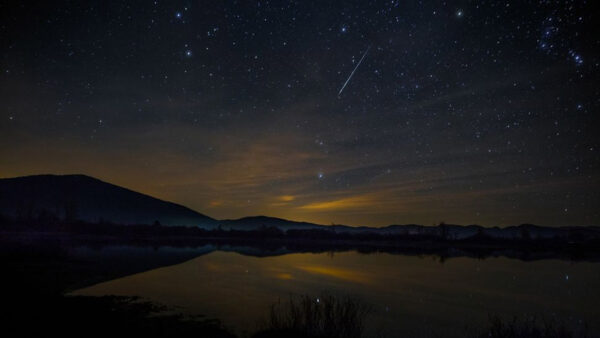
|
The Leonids Meteor Shower:
The eagerly anticipated Leonids Meteor Shower will grace the night skies from November 6th to November 30th, with its peak spectacle expected on the night of November 18th and 19th. To catch the best view, set your alarm for approximately 03:00 am (AWST) just before the break of dawn. This timing is ideal because the radiant point of the Leonids resides within the Leo Constellation, and it ascends in the early morning hours. In 2023, the Leonids are forecasted to offer a display of approximately 10 meteors per hour, benefitting from the absence of moonlight, as the Moon will be in its Waxing Crescent phase and will have set before the meteor shower becomes visible.
The Leonid meteors make a dramatic entrance, hurtling towards Earth at a breathtaking speed of 71 km/s, often creating awe-inspiring fireballs. Their origin is traced back to Comet 55P/Tempel-Tuttle, and these meteors are known to deliver extraordinary outbursts approximately once every 33 years. Having surpassed the midpoint since the last notable outburst in 1998–1999, astronomers anticipate the next predicted ‘Leonid meteor storm’ to grace our skies in 2032–2033.
The historical significance of the Leonid Meteor Shower is deeply rooted in its past. The remarkable Leonid Storm of 1833 left an indelible mark on history, as it is believed to have played a role in the religious fundamentalist movements of the 1830s in the United States. On the morning of November 13th, 1833, residents along the eastern seaboard of the United States awoke to an astonishing sight, with meteors appearing to fill the sky like snowflakes in a winter storm. The sight was so extraordinary that it led many to flock to churches, believing that Judgment Day had arrived.
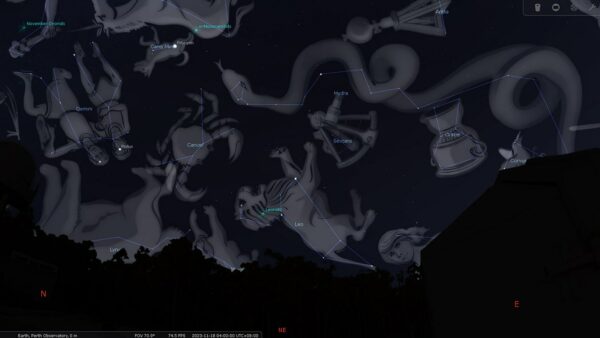
|
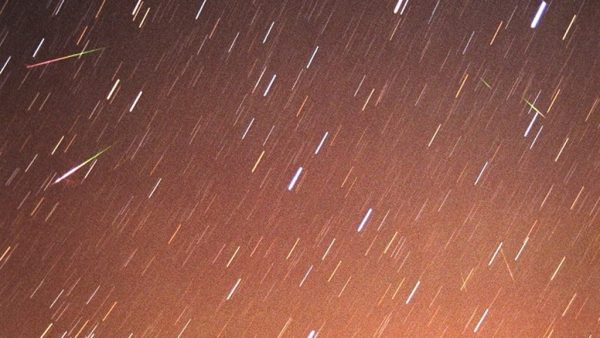
|
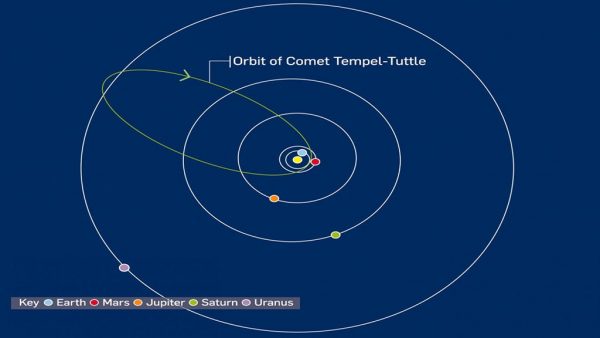
|
Things To Look At This Month:
The Andromeda Galaxy:
The Andromeda Galaxy (M31) stands as a magnificent spiral galaxy, located at a distance of roughly 2.5 million light-years from Earth. It holds the distinction of being the nearest major galaxy to our own Milky Way. Its name is derived from its location in the night sky within the constellation of Andromeda.
In 2006, groundbreaking observations conducted by the Spitzer Space Telescope unveiled a remarkable fact about the Andromeda Galaxy—it boasts an astounding population of approximately one trillion stars. This stellar abundance is more than double the estimated number of stars in our very own Milky Way Galaxy, which is believed to house between 200 to 400 billion stars. Spanning a colossal distance of around 220,000 light-years, the Andromeda Galaxy proudly claims the title of the largest galaxy within our Local Group.
However, what makes the Andromeda Galaxy even more intriguing is its cosmic fate. In a grand cosmic ballet that unfolds over the span of billions of years, the Milky Way and the Andromeda Galaxy are destined for a dramatic collision and merger. Approximately 4.5 billion years from now, these two colossal galaxies will engage in a celestial tango, ultimately converging to create either a massive elliptical galaxy or a sprawling, majestic disc galaxy. This extraordinary cosmic event is a testament to the ever-evolving nature of the universe.
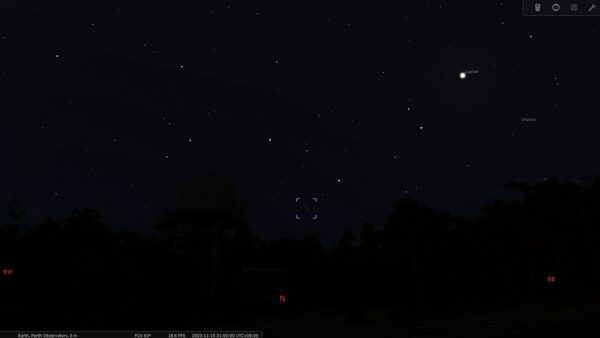
|
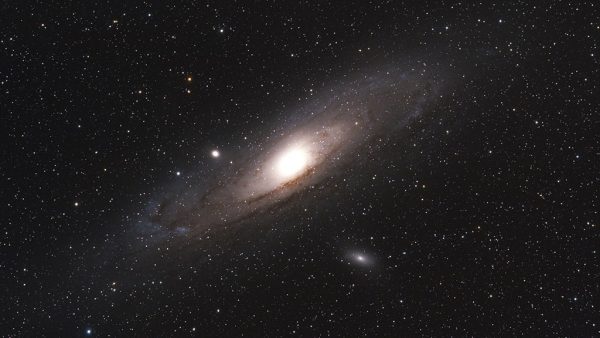
|
Southern Beehive Cluster:
Nestled within the southern constellation of Carina (The Keel), lies the captivating Southern Beehive Cluster, also known by its scientific designation, NGC 2516. This celestial gem goes by several monikers, including the Diamond Cluster and the Sprinter Cluster. Amateur astronomers affectionately dub it the Southern Beehive Cluster due to its striking resemblance to the Beehive Cluster (M44), a well-known cluster found in the constellation of Cancer, “The Crab.”
Situated approximately 1,300 light-years from our planet, the Southern Beehive Cluster stretches across a vast expanse of space, spanning a remarkable 66 light-years in diameter. Within its confines, more than 100 stars twinkle gracefully, with their ages estimated to fall between a range of 110 million to 135 million years.
This luminous cluster stands out as a prominent feature in the night sky, easily discernible to the unaided eye as a hazy, ethereal patch. The credit for its discovery goes to the pioneering French astronomer Nicolas Louis de Lacaille, who, armed with a modest ½-inch refractor in 1751, first observed this celestial wonder. While a ½-inch refractor may appear small, it possesses the ability to gather 3.3 times as much light as the fully dark-adapted human eye.
For those equipped with a 6-inch telescope, a closer inspection may reveal the presence of around 75 stars within the cluster, although this task can prove to be quite challenging. Notable denizens of the Southern Beehive Cluster include two luminous magnitude 5 red giants and a trio of binary star systems.
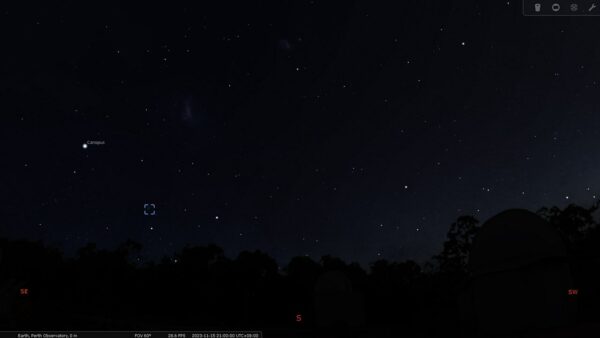
|
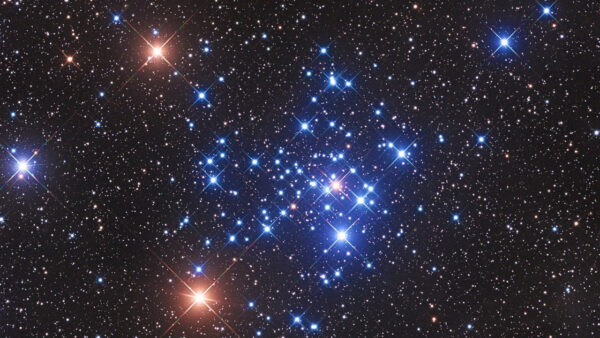
|
Tarantula Nebula:
The Tarantula Nebula, also known as NGC 2070, is a mesmerizing Emission Nebula that lies not within our own Milky Way galaxy but rather within one of its satellite galaxies, the Large Magellanic Cloud. This celestial wonder is situated at an astonishing distance of approximately 160,000 light-years from our Solar System and spans an impressive 1,862 light-years in diameter.
The Tarantula Nebula captivates with its extraordinary luminosity, to the extent that if it were positioned as near to Earth as the Orion Nebula, it would cast shadows and dominate a staggering 60% of the horizon. Such is the brilliance of this cosmic jewel.
Notably, the Tarantula Nebula holds the distinction of being the most dynamic and active starburst region within the Local Group of galaxies. This distinction arises from its unique location on the forefront of the Large Magellanic Cloud, where it encounters the relentless force of ram pressure, resulting in the stripping of gas and dust from the nebula. The consequential compression of the interstellar medium within the Tarantula Nebula is at its zenith, driving the prolific birth of new stars and igniting a celestial fireworks display of unprecedented scale.
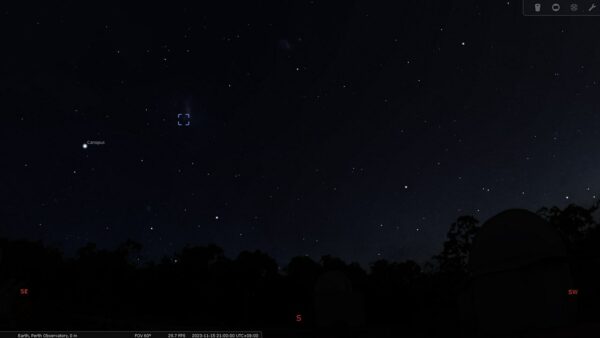
|
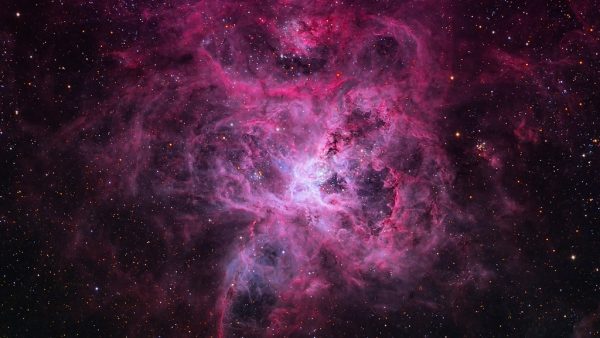
|
47 Tucanae:
47 Tucanae, also known as NGC 104, stands as a remarkable testament to the grandeur of our Milky Way galaxy. This dazzling globular cluster ranks as the second-largest and second-brightest of its kind within our galaxy. Situated at a staggering distance of 16,000 light-years from Earth, it graces the constellation Tucana (The Tucan bird).
Even to the naked eye, 47 Tucanae presents itself as a conspicuous stellar gem, resembling a solitary star. When observed through binoculars, it transforms into a captivating, albeit fuzzy, celestial blob. Omega Centauri, another well-known globular cluster, is the only one that surpasses 47 Tucanae in size and brightness.
Within the confines of this celestial marvel, a staggering 1 to 2 million stars come together in cosmic harmony. The cluster boasts an expansive diameter of approximately 120 light-years and possesses stars that have gracefully aged over 10 billion years. A remarkable fact is that the average distance separating stars at the heart of this cluster amounts to roughly 10% of a light-year, more than 100 times the diameter of our own solar system.
In a remarkable discovery, announced in February 2017, indirect evidence emerged suggesting the possible presence of an intermediate-mass black hole within the heart of 47 Tucanae, adding yet another layer of intrigue to this already captivating cosmic ensemble.
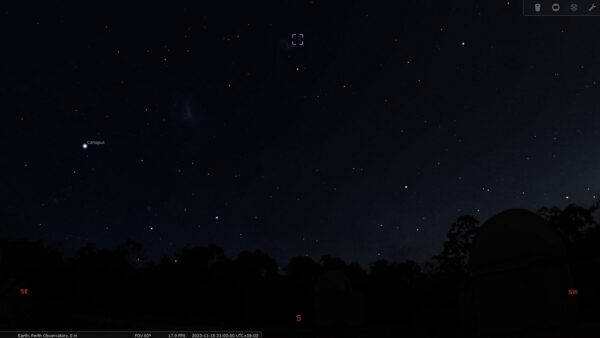
|
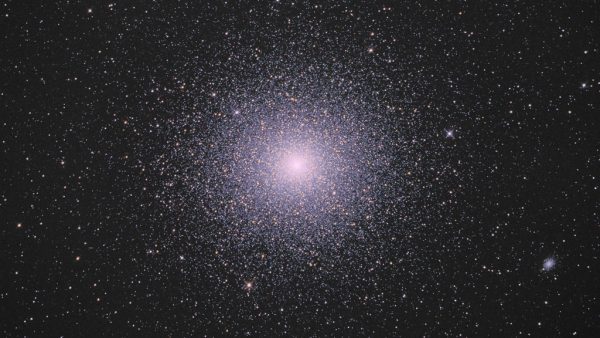
|
Phases Of The Moon:
